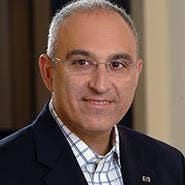ProLiant Gen9 Server Preview: HP Talks Data Center Compute, Efficiency

Hewlett-Packard on Thursday previewed some of the technologies behind its upcoming new line of ProLiant Gen9 servers and tying those technologies to a corporate strategy it said will help find new ways to take advantage of increased pools of compute resources.
HP, along with rivals, including Dell, Cisco, Lenovo and others, are expected to release details on new generations of servers based on Intel's upcoming Grantley-EP family of server processors.
Intel is expected to officially roll out the Grantley-EP platform, also known as the Intel Xeon processor E5-2600 v3 family, at the Intel Developers Forum, which is being held in San Francisco from Sept. 9 to 11. Major server vendors historically have unleashed new generations of their servers at the same time Intel releases its new server processors.
[Related: HP's Q3: PCs, Servers, Networking Business Going Strong]
With its upcoming ProLiant Gen9 server family, HP is really looking at the future of the data center and how to help customers reduce costs while increasing efficiency, said Antonio Neri, senior vice president and general manager for servers and networking for the company.
"The heart of this strategy is not the servers, but the compute," Neri told CRN. "We're not just announcing new servers, but a whole corporate strategy."
By "compute," Neri said he was referring to a broad pool of processing power that can be pooled and virtualized as needed in the data center, and which can be used with software-defined technologies. "The fact is, convergence is taking place, and compute is at the heart of it," he said. "This requires a vast pool of resources, which can be pooled in a scalable fashion."
This week's VMworld conference continues to show the increasing importance of having the right compute resources as IT infrastructures continue to grow, said Rich Baldwin, CIO and chief strategy officer at Nth Generation Computing, a San Diego-based solution provider and longtime HP channel partner.
"VMworld's big discussions were all around the converged and hyper-converged infrastructure solutions coming to market," Baldwin told CRN. "People are now talking about getting the time -- from taking a device out of the box and powering it up -- to 15 minutes. In the past, that was a big task."
Keeping the compute-to-power ratio as high as possible is also important as customers find new ways to take advantage of the compute resources of new servers, Baldwin said.
"We can't keep adding new power sources to keep up with the demand for new compute resources," he said. "As adoption increases and accelerates, data centers could run out of power in a few years. So even though new servers are not an 'Oh, wow!' celebration, they're still important."
NEXT: Drilling Down Into HP's ProLiant Gen9 Server Plans
Chris Case, president of Sequel Data Systems, an Austin, Texas-based solution provider and longtime HP channel partner, said HP has already proven that it can maintain its server leadership.
"At HP Discover, we got to see the new HP Apollo systems," Case told CRN. "Sequel already has its own HP Moonshot chassis. They show HP is already moving to change the server architecture, and is continuing to lead the technology."
Neri said HP plans to introduce 21 new platforms as part of its ProLiant Gen9 family through fiscal year 2015, although he declined to provide specific feeds-and-speeds details about those servers until they are officially announced.
However, he said to expect the compute capacity of the ProLiant Gen9 servers to increase threefold over that of the current ProLiant Gen8 servers, resulting in a lower TCO, or total cost of ownership.
They will be married with a modular architecture to increase configuration flexibility, RESTful APIs and HP's OneView infrastructure management application, which works with both physical resources and clouds, such as the HP Helion Cloud or those based on Microsoft or VMware platforms, he said.
HP also is tying the new ProLiant Gen9 servers to accelerated delivery services that include significantly faster provisioning, as well as a four-times boost in business outcome performance, Neri said.
That boost comes from a 14 percent increase in memory performance tuning; a doubling in IOPS; a tripling in the compute-per-watt ratio; a halving of server boot time; and the ability to combine HP's ILO (integrated lights-out management) and OneView to discover and manage hundreds of servers in seconds instead of hours, Neri said.
"Customers don't want to spend so much time managing the infrastructure, but would rather spend more time managing their business," he said.
To ensure customers get maximum business value from the ProLiant Gen9 servers, HP is mapping the platforms to a series of 10 channel sales plays, including big data, the virtualization and modernization of data centers, or SMBs, said Sue Barsamian, senior vice president for indirect sales in HP's Enterprise Group.
For example, Barsamian cited HP's Just Right IT program for helping clients access the best technology regardless of their size.
"If we need to scale down to get the right TCO for specific workloads, we can make Gen9 even more competitive and aggressive than earlier platforms," she said.
For HP, talking about its compute strategy ahead of the actual launch of its new ProLiant Gen9 servers is a way to not steal any thunder from Intel's upcoming Grantley-EP launch, Neri said.
"Intel will make its announcements with new products, while we are now talking about a compute vision with a full set of platforms around it," he said. "Intel has to do its job. We have to do our job."
PUBLISHED AUG. 28, 2014